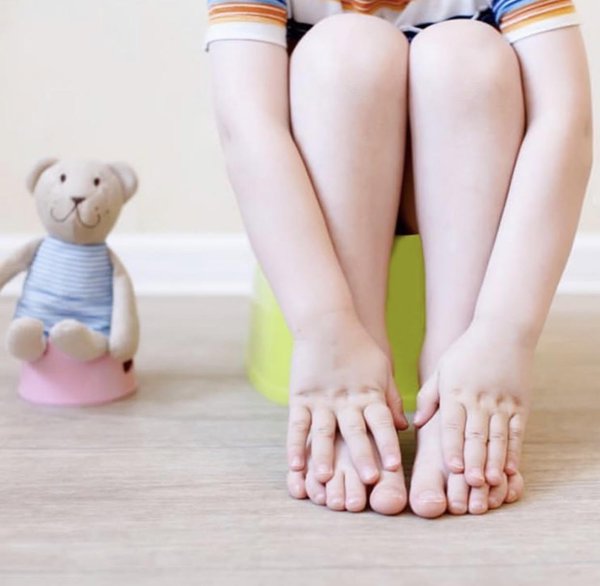Ask the Expert: When to Start Potty Training

Potty training can be a stressful time for both parents and children. The adults in the situation are often very ready to make the move from diapers to underwear. But children can feel stressed they’ll disappoint the adults they love or feel they’re being asked to do something they aren’t quite ready for physically, emotionally or intellectually.
But, with planning and realistic expectations, this transition can be relatively easy and fast!
The secret to potty training:
The secret to successful toilet training is to wait until a child is ready. Of course, this is different for every child.
Potty training is a complex interaction between body awareness (noticing the signals sent from the body), cognitive understanding (translating those signals into what they mean), and physical control (being able to control the necessary muscles and urges).
Most children start to show interest in potty training around 2 years old, and are ready to start the learning process within the next six months. Some are ready early and some are ready much later, especially first-born boys.
If you start the process before a child is ready, you may actually be setting yourself up for many battles and a longer learning process. If you wait until they’re ready, the whole process can go as quickly as a week (with a few accidents here and there). Imagine that!
Cues your child is ready to start potty training:
1. Your child shows some interest in using the toilet. Children learn much more quickly when something is interesting to them. Recognizing and building on that interest will make the process go more smoothly.
2. Your child is dry for longer periods of time. This shows he is developing the ability to control those muscles.
3. Your child shows awareness that she is urinating or defecating. This awareness may be indicated in facial expressions, words, or behaviors (for example, squatting or hiding).
4. Your child is physically able to get in and out of pants and/or skirts.
How to start the potty training process:
1. When your child starts to show interest, start to share some books about the topic
Type “potty” into Amazon.com and you’ll be treated to a whole list of books for children.
2. Pick a time to start when you can be home for a few days
Letting your child walk around the house with little to no clothing can make it easier those first few days.
3. It’s often easier to skip the pull-ups and go right for underwear
In underwear, children are better able to feel when they have an accident, and quickly learn it’s not comfortable. It may mean a little more laundry for you in the short term, but it makes the training process go more quickly.
Save the pull-ups for times you are out of the house or at night. Make a special trip to the store to pick out underwear. Learning to use the toilet is a lot more fun when it means you get to wear underwear with your favorite characters.
4. Be as nonchalant as possible when your child has an accident
Simply help him/her clean up and say “you’ll do better next time.” When there’s a lot of emotion around accidents, a child may hide, get overly stressed, or the process might turn into a power struggle. On the other hand, celebrate the victories.
Raising a child is full of worries and comparisons, especially when others say things like, “my child was completely trained at 14 months.” Don’t let yourself get caught up in those concerns. Simply focus on doing what is right for you and your child. And, rest assured, there are very few children who have gone to college in diapers. This too shall pass.